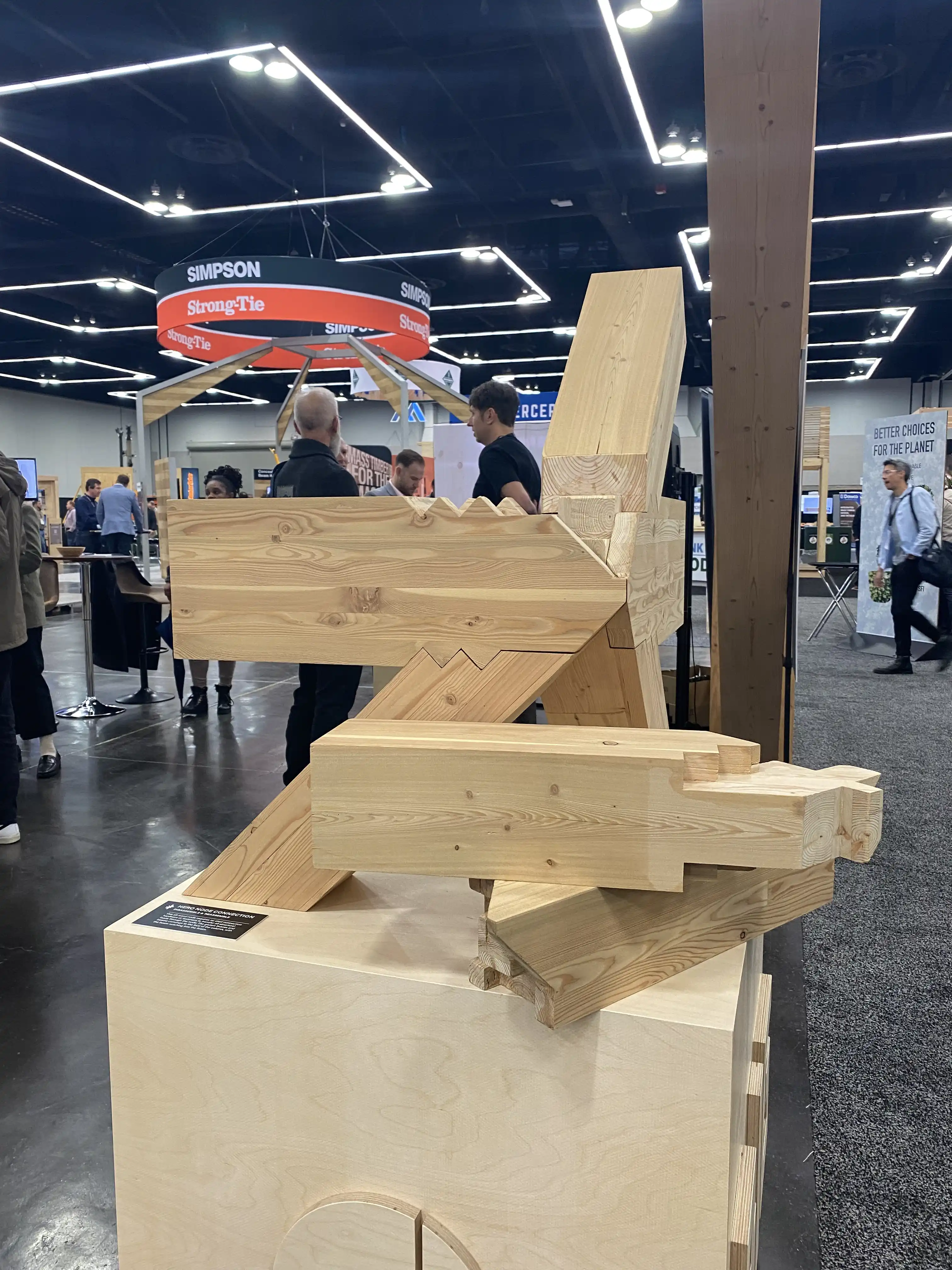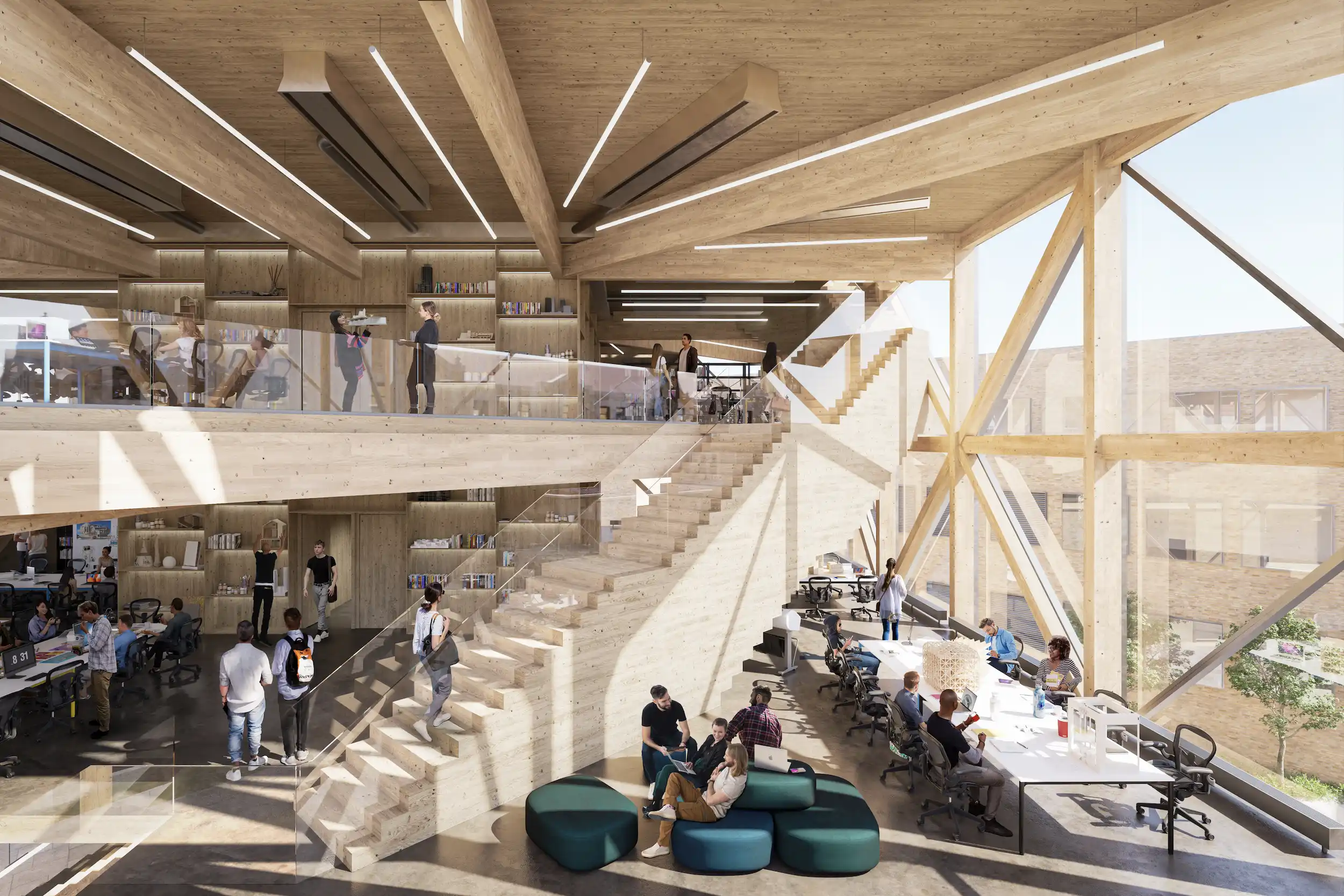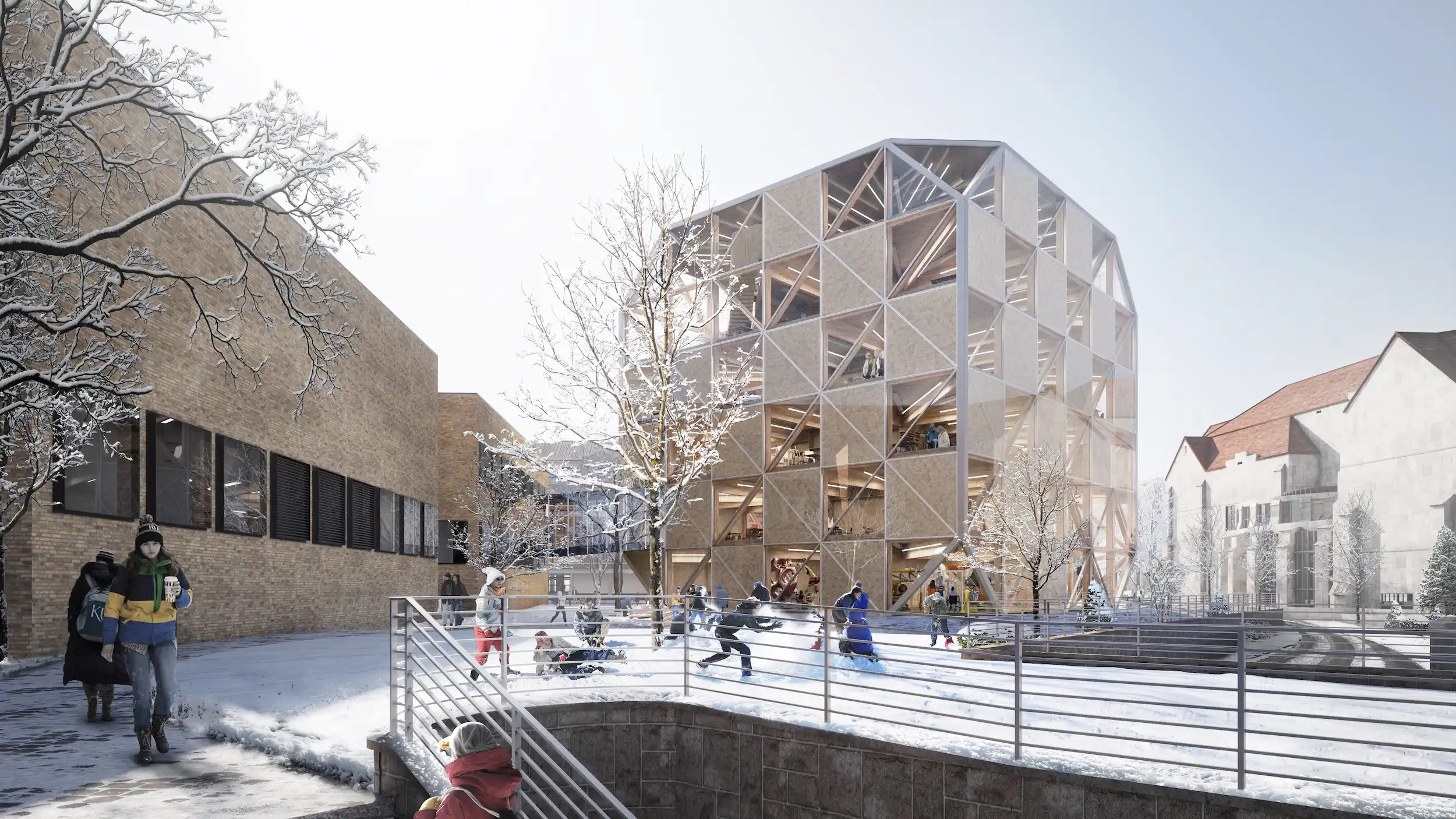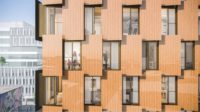The International Mass Timber Conference Returns to Oregon Convention Center for 2024 Edition

Late last month, the International Mass Timber Conference returned to the Oregon Convention Center in Portland. The eighth iteration of the annual event attracted 3,000 professionals from 39 countries, representing such industries as forestry, wood products manufacturing, real estate development, and design and construction.
Preceded by a day of workshops, hard-hat tours, fabrication-shop visits, and a forestry excursion to Santiam Canyon southeast of Portland, the conference, held on March 27 and 28, delved into recent mass-timber advancements as well as the challenges facing this still-fledgling, but steadily growing, material and construction methodology. In the United States and Canada, 279 mass-timber projects were constructed in 2023, compared to 215 in 2022, and 183 in 2021, according to the International Mass Timber Report 2024, published by the conference organizers and released shortly before the event. The increase in activity mirrors growth in the conference itself, which drew just 500 attendees in 2016, the first year it was held.

View of the expo floor at the 2024 International Mass Building Conference. Photo © Joann Gonchar
The theme of a market on the upswing was echoed in the first day keynote, a roundtable discussion that included panelists from finance, government, development, and planning. “It feels like mass timber is having a moment,” said moderator Ian Galloway, vice president of the Portland branch of the Federal Reserve Bank of San Francisco. Much of the conversation centered on the potential of mass timber to address the housing shortage, as well as regulatory hindrances and outdated policy. “We need to figure out how to get out of our own way to increase the housing supply,” said Angela D. Brooks, president of the American Planning Association and director of the Illinois office of the Corporation for Supportive Housing.

The 22-unit 1510 Webster, Oakland, California. Photo courtesy oWOW
Sessions covered topics ranging from carbon accounting, forestry practices, research, and technological innovations. Among the presenters for “Scaling Up: Tall Timber Trends and Paint Points,” was Andy Ball, president of oWOW, the architect, developer, and general contractor behind 1510 Webster, a 222-unit apartment building now nearing completion in Oakland, California. With 17 stories of mass timber over a two-story concrete podium, the tower is the first prescriptive Type IV-A project in the country under recently adopted tall wood provisions of the 2021 version of the International Building Code. It features an innovative point-supported structure, eliminating the need for beams. According to oWOW’s calculations, the strategy resulted in significant scheduling and budget savings compared to a concrete structure, though the mass-timber elements are now completely encapsulated in drywall, as per the Type IV-A fire-protection requirements. “You can’t tell it is a wood building,” lamented Ball, adding, “I hope we can change the code in the future.”

Located at UC San Diego, the tallest primarily mass-timber structure to be tested for seismic resilience on an earthquake shaking table was discussed at the conference.Photo courtesy Timberlab/Flor Projects
Other talks showcased cutting-edge research, including one on seismic design and the TallWood Project of the Natural Hazards Engineering Research Infrastructure (NHERI), which is exploring the resiliency of mass-timber “rocking wall” systems. Shiling Pei, associate professor at the Colorado School of Mines and the project’s principal investigator, spoke about the initiative, which involved the construction of a 10-story, 112-foot-tall mass-timber tower on a shake table at the University of California San Diego’s Englekirk Structural Engineering Center and then subjecting it to simulated earthquakes. In total, the test tower was subjected to the forces of 88 different temblors, including California’s 1994 Northridge quake and Taiwan’s 1999 Chi-Chi quake. With sensors distributed throughout the tower, the performance of both structural and non-structural elements was monitored, but with a focus on the response of the cross-laminated-timber and mass-ply-panel rocking-wall core. It includes post-tensioned steel rods that allow it to return to plumb when the shaking is over, like a push puppet, Pei joked.
A highlight of the conference was a keynote by Emily Pillotin-Lam, the founder of Girls Garage, a tuition-free design and construction school for girls and gender-expansive youth in Berkeley, California. The talk chronicled her journey from disillusionment with her job as an in-house architect for a retail chain, to the establishment of the nonprofit in 2013. With a motto of “fear less, build more,” the program’s participants, more than 80 percent of whom identify as youth of color, learn technical skills and find their creative voice while building modest projects, including planters, picnic tables, and shade structures for other community-oriented organizations. While her presentation had little to do with mass timber, its optimism struck a chord with the construction-focused crowd. “Building is an act of hope,” she said. “And the highest service, is building in, and for, your community.”


A Japanese-inspired all-wood joint that attendees were invited to take apart and reassemble at the StructureCraft boothPhotos © Joann Gonchar
On the conference’s show floor were more than 180 exhibitors, including manufacturers of mass-timber products, fabricators, design firms, and educational institutions. Some of the most engaging exhibits included a live construction demo of a mass-timber structure and the booth of the StructureCraft. Here, the structural engineering firm displayed a full-scale mockup of one corner of the glulam diagrid frame for Makers’ KUbe—a Bjarke Ingels Group- and BNIM–designed mass-timber building planned for the University of Kansas School of Architecture & Design. Also on hand was the structure’s Japanese-inspired all-wood joint, which attendees were invited to take apart and reassemble.


Renderings of Makers’ KUbe, a BIG- and BNIM–designed mass-timber academic building planned for the University of Kansas School of Architecture & Design in Lawrence. Images by Kilograph, courtesy BIG
For 2025, Arnie Didier, the COO and principal of the Forest Business Network, which produces the conference, promises more interactive displays, forest tours, and building visits, including the region’s highest profile mass-timber project—the expansion of the main terminal at Portland International Airport—slated to open this summer. Next year, the conference will take place from March 25 through 27, again at the Oregon Convention Center.




